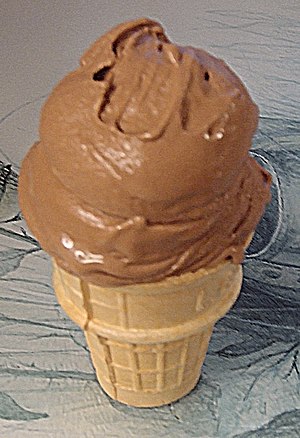In Confessions of an Advertising Man, David Ogilvy wrote, “Most copywriters think in terms of words, and devote little time to planning their illustrations. However, knowing how to design ads is just as important as knowing how to write them.

Image via Wikipedia
The illustration often occupies more space than the copy…it should telegraph the same promise that you make in your headline” (for those under fifty, the telegraph was the 19th century’s version of instant messaging).
The way your ad looks is just as important as what it says (Yes, I know copywriters and designers clash about this. I’ve already written about marketing vs creatives. That doesn’t mean the words aren’t important too. Don’t worry, we’ll get to that in a later post).
Use photographs (not illustrations)
Photos draw more attention. You want something that says clearly and immediately what your ad is about – something that tells a story. Try before and after photos or an empty chair with a book nearby. Or a dog gazing out the window.
Skip the pretty pictures
Avoid softly lit and carefully composed images. You don’t want award-winning, you want sales winning!
Make the logo bigger
I know it’s sacrilege, but it does work, especially if your clients and customers already know and trust you. It activates the “warm fuzzies” in their heads.
Try “direct marketing ugly”
This means starbursts, Courier or Times Roman type, and minimal colors. It often works better than something ‘pretty.” Test it and see. Some scoff at this, but it’s been working well since Claude Hopkins set down the principles of Scientific Advertising in 1920.
Add captions under the photo
People read them (more often than they read the article).
Use subheads – and bold them
Some people read everything, others scan. Give the scanners enough to look at so they still get the story – and want to go back and read the bits they missed.
Keep your type at a readable size
11 or 12 points is best in print, make it 14 online. Smaller than that and people can’t read it (if your audience is older err on the side of larger!). In print, a serif font (like Times or Baskerville) is better. Many prefer sans serif (like Arial) online, because the resolution of pixels on a monitor is harder to read than a printed page.
Light background, dark type
You can use black on white, dark blue on pale grey, or whatever colors appeal to your audience – just don’t reverse out (white type on dark background) large blocks of type. It’s really hard to read. You want people to keep going (not slow them down or frustrate them).
Break up the copy
Avoid one or two big blocks of square text. It’s pretty. but it’s harder to read and follow along. Use bullets, arrows, and numbers to help readers follow along – and highlight the important stuff. If it’s long copy, add some boldface subheads, block quotes or other eye-catchers to break it up.
Add leading
Leading is the space between lines (named after the actual lead that separated lines of type back in the days when it was set by hand with metal letters). It’s easier to read the copy.
Oh, and these tips work online too.



![Lovebirds [Not; They're Lories] Lovebirds [Not; They're Lories]](http://farm4.static.flickr.com/3589/3406700453_a7f8c2fc57_m.jpg)

